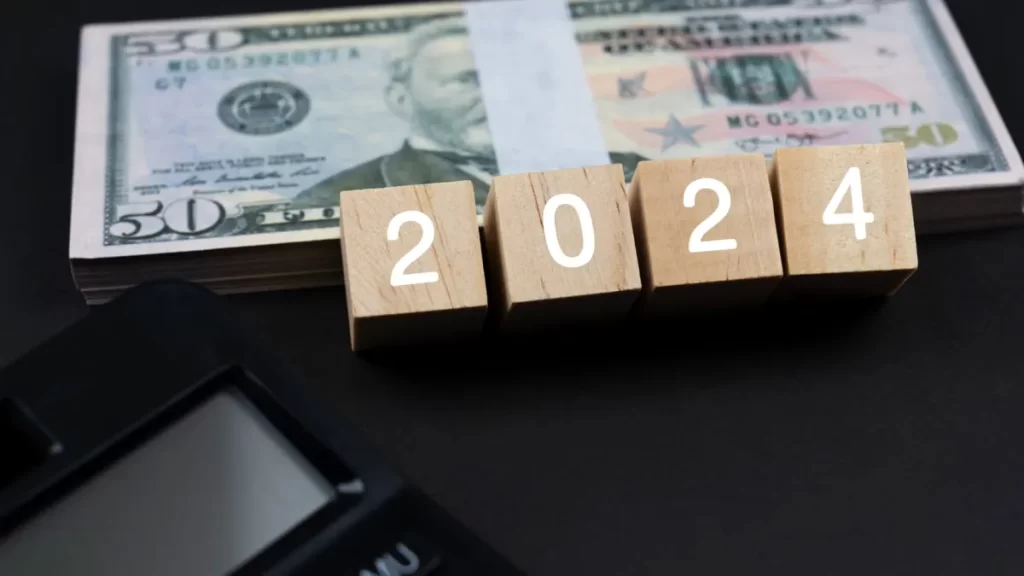
This is the time of year for making — and breaking — resolutions.
With high inflation, rising interest rates, and economic uncertainty, two-thirds of American adults are making resolutions to improve their finances this year, according to a survey by Fidelity. Some of the most common include saving more money (41%), paying down debt (38%), and spending less money (30%).
Estimates vary, but people have been found to break their New Year’s resolutions within weeks, if not days.
Whether you’re just getting started or are trying to get back on track, here are some tips to help you achieve your money resolutions for 2024.
Set well-defined, achievable goals
Resolutions to save more money, pay down debt and spend less are common goals, but experts say they are too broad to be effective.
“A lot of people, much like with fitness, want to get into the best shape of their lives starting in the new year, and just like with finances, it doesn’t work that way,” said Michael Liersch, head of advice and planning at Wells Fargo Wealth and Investment Management.
He says it works best to commit to small, well-defined tasks.
For example, “instead of thinking of spending less, become more intentional about your spending,” said Liersch, who also holds a Ph.D. in behavioral science.
Liersch said to start by asking yourself: “Are you really spending on things that give you joy?”
Break a bigger objective down into small steps to create habits that move you toward your goal. When you can, make those steps fun for you.
“The more you’re interested in your own goal, the more you’re going to read and learn,” said Pam Krueger, founder of Wealthramp, a fee-only advisor matching service. “The more attached you are, the more you’ll do it.”
Set a weekly appointment to ‘visit’ your money
The first step to achieving your financial goals is to understand where your money is, and know how much is coming in and going out.
Many people don’t know how many accounts they have. Those might include checking and savings accounts, workplace retirement accounts, college savings accounts and investment accounts, as well as accounts for mortgage or home equity loans, auto loans and credit cards.
Take the time, once a week for at least the first few months of the year, to “visit” your money. Put an appointment in your calendar for the same day and time each week. Use that time to look over your accounts to get an accurate picture of your take-home pay, how much money you’re spending and what you’re saving for short- and long-term goals.
“Once you have a good understanding of that you will know what your needs are,” said Rachael Olson, director of product strategy for Discover Personal Loans. “Until you get that good picture of everything, it’s really hard to get started if you don’t know where you need to be.”
Save in a high-yield savings account
If your goal is to save more, break that down. Figure out how much money you can put away each week into an emergency fund or save for a big purchase you plan to make this year or in the next few years. Stashing away a little weekly sum can add up, but it takes time.
Some online-only banks have top interest rates on savings accounts at 5% or higher. If you open a high-yield savings account earning 5% interest, starting with just $20 and adding $20 a week and you don’t withdraw any money, you’ll have saved more than $1,000 at the end of a year.
With compound interest, you’re earning money on both your original principal and interest earned, so long as you keep those funds in the account.
Use debt as a tool, not a burden
Taking on debt may be the only way you can afford to make a resolution a reality, when it comes to homeownership or earning your college degree. It’s not that debt is unequivocally “good” or “bad,” it just has to be used wisely.
Make sure your debt load is manageable. Know what you owe. Are you confident you’ll be able to make the set payments on a “buy now, pay later” program? Make sure to read the fine print so you know what the penalties could be.
The average annual percentage rate on credit cards is far higher than on a buy now, pay later plan, rising from less than 15% as recently as last year to more than 20% last month — an all-time high.
Try eliminating high-interest debt by transferring credit card balances to a new card that charges 0% interest for 12 to 18 months or more. Figure out how much you will have to pay on that card, likely above the minimum balance, to pay it off before the interest changes to a new rate that may be well above 20%.
Another option is to consolidate the debt with a personal loan. The average personal loan rate was around 11.5% last month, half as much as the average rate on a credit card, according to Bankrate.
Play the long game
Whether it’s paying down debt or saving for a big purchase such as a house, many financial goals take time.
“It takes a long time for a lot of human beings, sometimes 5, 10, even 20 years to accomplish that goal,” said Wells Fargo’s Liersch, “so you just got to stick with it and inspire yourself to make sure you can achieve it.”